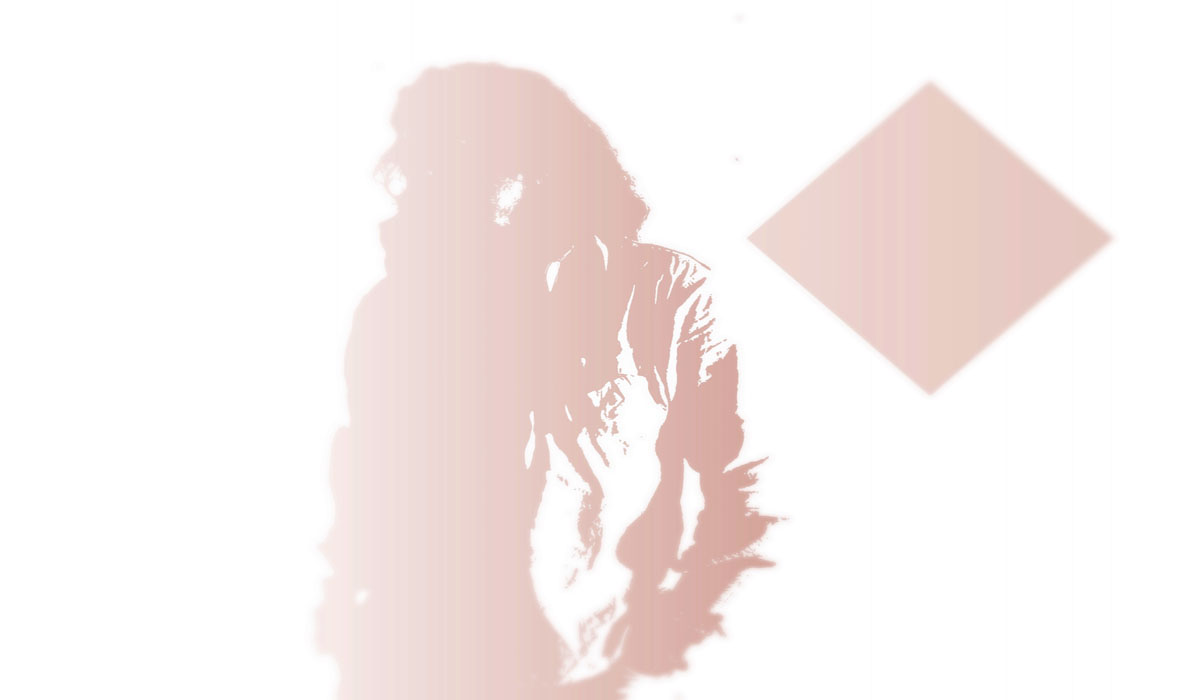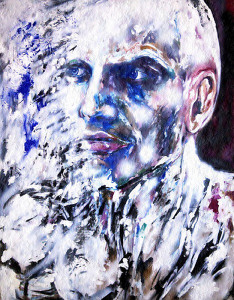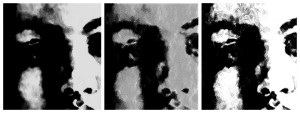Daniele Bongiovanni è un artista accademico, poeta e illustratore d’Arte.
Nato a Palermo l’11 Aprile 1986, è un giovane talento italiano molto attivo oggi in Europa e Stati Uniti. Il suo curriculum vanta una laurea a pieni voti in Didattica dell’Arte, presso l ‘ Accademia di Belle arti di Palermo e da lì inizia la sua carriera.
Da sempre dimostra di essere un artista particolarmente interessato all’anatomia umana , allo studio della morfologia e della forma, ricercando con attenzione e studiando , i materiali da utilizzare. Questi sono i temi che hanno caratterizzato le sue prime opere ( Pelle sporca, Quasi Mimesi, Il creatore, Neri, Carte di ogni identità ecc. ) , che hanno aperto la strada alla sua carriera internazionale, ricevendo importanti riconoscimenti. Daniele Bongiovanni è un artista che cerca di creare attraverso lo studio della forma e dei materiali, opere in grado di esprimere concetti e teorie che garantiscono forte identità ad ogni creazione. Oggi, dopo essere stato considerato l’artista del momento dal “ P’tite Journal Artistique” , e dopo aver ricevuto una menzione speciale per la tecnica , la metodologia e la ricerca , non poteva passare inosservato da noi di The Walkman Magazine! E allora abbandoniamoci a questa intervista e ripercorriamo insieme tutte le tappe più importanti del suo viaggio nei meandri più curiosi della sua Arte!
Maestro Bongiovanni , lei riserva da sempre nelle sue opere una particolare attenzione per l’essere umano , concentrandosi sull’anatomia umana ed in particolare sul volto : l’origine della creazione. Non un’ origine statica , al contrario , in continuo mutamento. Come cerca di far comprendere al pubblico quest’ idea complessa attraverso i suoi dipinti ?
Per quanto riguarda lo studio dell’anatomia , in particolare , quello del volto è uno studio che mi ha sempre coinvolto. Ho iniziato sin da giovanissimo per poi definire la ricerca con gli studi accademici. La costruzione dei soggetti da un punto di vista anatomico- muscolare è la base della mia ricerca figurativa. Tutti i miei dipinti prima di incontrare la pittura si definiscono con il disegno a matita , mezzo che mi da l’opportunità di creare la giusta morfologia e la dinamica della forma. In seguito cerco di far ” muovere ” il soggetto con la pittura così da simulare anche una mutazione e dare al tutto un impatto emotivo. È quasi un crescendo. Il mio pubblico o gli esperti percepiscono e vedono nel complesso dando anche molta importanza alla poetica del mio quadro , leggono l’immagine e il titolo in contemporanea. Da lì se c’è empatia tutto funziona. Espressione e forma , tecnica e azione , queste per me sono le chiavi per dare ” vita ” all’opera.
Come nascono le sue creazioni , vi è uno studio tecnico o hanno un ‘origine maggiormente istintiva?
Come dicevo prima c’è uno studio alla base , concetto di disegno e pittura devono incontrarsi. L’istantaneo sta nel buttare giù l’idea , poi una volta tracciato il primo segno , lavoro molto sulla tecnica , ma senza abbandonare l’armonia. Nel disegno e nella pittura ci sono nozioni da rispettare , ma è giusto anche concedersi dei momenti liberatori che in un secondo momento vanno nuovamente ripresi.
Quali sono i temi che più preferisce trattare , e cosa maggiormente la ispira ?
I temi delle mie opere hanno una sorta di filo rosso che li lega , in alcune rappresentano uno stato d’animo catturato in un momento , altri sono frutto d’ interessi , ma anche di cronaca , di paesaggi che rilasciano emozioni da studiare , oppure di teorie e concetti appartenenti al mondo dell’ arte e della filosofia. Il filo rosso sta nel cercare di dare ad ogni quadro un un forte impatto visivo.
C’è un filo conduttore che lega le sue collezioni , o cerca di dare loro un ‘identità ogni volta differente ?
Si , anche da collezione a collezione c’è un filo conduttore , posso fare l’esempio : Quasi Mimesi , Aesthetica , Vedute , ecc. Sono , tutti temi filosofici. La cosa a volte nasce per caso , il tutto forse è dovuto ad una ricerca che va avanti da anni , legata anche agli studi che ho fatto all’ Università.
Rispetto al pubblico , cerca di trasmettere una sua idea oppure decide di dare più spazio ad un’ interpretazione soggettiva dell’ opera?
Come tutti gli Artisti , spero sempre di trovare un punto d’incontro tra me che ho creato l’ opera e chi ne sarà fruitore. Io nelle mie dichiarazioni esprimo sempre con chiarezza il mio intento , ma è normale che chi osserva o acquista l’opera dà la sua interpretazione , si fa il suo viaggio e non il mio.
Maestro Bongiovanni , qual’è il quadro che più di tutti , parla di Lei , a cui si sente più affezionato?
Una delle opere più importanti che ho realizzato è ” Il creatore ( m’ illumino d’ immenso ) ” . È un lavoro importante sia per me , ma anche per la critica e gli addetti ai lavori , dal mio punto di vista è importante perchè esprime al massimo il mio stile pittorico , la mia ricerca , tra il figurativo accademico e sperimentazione della materia. Il soggetto rappresentato è originale , come tutti i miei lavori , creato e costruito da zero senza alcun modello. Uomo che si esprime al massimo da un punto di vista interiore , verso qualcosa che lo istruisce e cattura. Lo sguardo come potete notare non è sorpreso , ma determinato. Questo quadro è nato in un momento importante , ed è per questo motivo che al di là del suo significato lo considero un lavoro chiave. Tecnicamente il soggetto non si esprime grazie al contrasto tra soggetto e sfondo , ma grazie alla loro fusione.
Nella sua collezione ” Neri” ha esposto quadri ispirati da scatti di illustri personaggi , cosa riesce a trasmettere una tela in più rispetto ad una fotografia ? Quale crede siano gli effetti di una cultura digitale e tecnologica sull’arte ?
I personaggi che ho rappresentato , sono dei volti dal punto di vista espressivo importantissimi , Lucio Battisti per fare un esempio , ha delle caratteristiche importanti che mi hanno impegnato moltissimo per trovare una giusta soluzione pittorica , Etta James ha uno sguardo di rara bellezza. Nei dipinti che ho realizzato ho cercato di dare una nuova interpretazione al tutto , pur mantenendo riconoscibili al massimo i volti. La vera ricerca , come accennava lo Storico dell’arte Alessandra Buccheri che ha analizzato i miei lavori , sta nella pennellata che porta la mia firma. Per quanto riguarda la cultura digitale e tecnologica parliamo semplicemente di un’altro approccio con l’arte , altri mezzi l’arte digitale , per esempio , è una disciplina artistica che richiede come la scultura e la pittura , anni e anni di studio.
Che tipi di materiali e tecniche , come artista contemporaneo , preferisce utilizzare ?
Io utilizzo tutti i materiali. Olio , tempera , vernici , lavoro molto sulla tecnica mista , tutto dipende dalla preparazione che applico al supporto , che può essere tela nella maggior parte dei casi , ma anche , legno , plastica ,ecc.
Lei , molto giovane , ha già esposto in numerose città italiane ed estere ; è stato premiato a Parigi per la tecnica e la metodologia. Quali sono i suoi obiettivi futuri e a cosa sta lavorando ?
Attualmente sto per definire un lavoro che verrà installato in permanenza al Roxy Bar , sarò in mostra a Dublino dove in seguito all’evento verrà installata un’opera della collezione ” White” che ho appena terminato nelle sedi dell’ Università , poi Milano dove sarò presente anche alla Fiera di Arte Contemporanea. Sto inoltre lavorando per una mostra a Udine , in Estate presenterò la collezione “Aphorisms ” alla Biennale del Brasile , dove sono stato recentemente invitato.
, The WalkMan Magazine cerca di esaltare e mettere in luce giovani talenti in grado di approdare innovazione alla cultura e alla fama del “Bel Paese “. Quale consiglio desidera lasciare a chi come lei decidesse di intraprendere questa strada , in un ‘epoca in continuo mutamento, rispetto alle novità comunicative e capacità di esprimersi ?
L’altro giorno parlavo con un mio allievo , che mi chiedeva come definire in futuro il suo lavoro d’artista. il mio consiglio è quello di una propria identità , chi possiede identità e valore , riuscirà sicuramente a trovare i propri spazi per esprimersi. Ciò che fa acquistare consapevolezza delle proprie doti sono lo studio e la ricerca.
[divider]ENGLISH VERSION[/divider]
Daniele Bongiovanni is an academic artist , a poet and an art illustrator , born in Palermo on April 11th , 1986 . After graduating in Didactic of Art at Palermo ‘s Accademia delle Belle Arti , this young italian talent is a very active today in Europe and the US. He Has always been interested in human anatomy and the materials. These are the topics that have marked his first works of art ( Pelle sporca , il creatore , Neri , Carte di ogni identità , ecc. ) that paved his way.
Daniele Bongiovanni is an artist who aims to create, whitin the study of the form and the materials, works of art that could express concepts and theories that give a strong personality to every artistic creation. Today, being regarded as the artist of the moment in Paris by the magazine P’tit Journal Artistique , and being a special reward at the Palais du Louvre for his technique and his methodology, this emergent contemporary artist granted this interview for our Magazine. This interview let us to make a journey in his artistic expression.
Master Bongiovanni, in your works you have always paid serious attention to the human being, focusing on the anatomy and the face. This last one is in your opinion the source of a creation always on the move. How do you make the audience undesrtand this complex idea toward your pointings?
As for the study of anatomy in particular the face, it is something that has always involved me. The building of the subjects from an anatomic- muscolar point of view is the source of my figurative research. All my works, before meeting painting are defined by the pencil drawing. This is an instrument that gives to me the opportunity to create the right morphology and the dynamism of the form. Then, I try to give motions to the subject with painting, simulating even mutation and giving everything a sensitive impact. It is almost like a crescendo. My audience or the specialists read the image and the title at the same time. If there’s emphaty in that moment, everything works. Expression and shape, action and technique. There are the key words to give life to the work of art.
How does arise your artistic creation? Is there a technique or it stems from istinct ?
Like i said before, there is always a study behind. Drawing and painting have to meet each other. The istincitive part consists in jotting down an idea. Once I trace the first sign, I work very much on the technique, but without giving up the harmony. Is true that there are always notions to observed both in drawing and in painting, but there is nothing wrong in allowing ourselves some liberating moments.
What are the topics that you like most, what does inspire you most ?
The topics of my works have a sort of red line that links them with each other. In same works I portray the mood of a moment. Same others are the outcomes of my interests, but also of news reports, of landscapes or theories and concepts that belong to the world of art and philosophy. This red line consists in aiming to give every paintings a strong visual impact.
Is there a central idea that links you collections ?
Yes, from collection to collection, there is a central idea. For example, Quasi Mimesi, Aesthetica,Vedute are based on philosophical topics. Sometimes is something that happens by chance. I guess is the result of a quest that has been going on for years, also related to the studies I carried to the University.
As for the audience, do you aim to express your idea or do you give more room to a personal interpretation of the work?
Like every artists, I always hope to find the meeting point between me and the people that are going to enjoy it. I always express my will in painting, but is normal that the peoplewho observe or purchase the work give their personal interpretation.
Master Bongiovanni, what is the painting that fascinates you most ? To what painting you feel most attached?
One of the most important work that I’ve ever made is Il creatore ( m’illumino d’immenso). Is an important painting both for me and for the critics. From my point of view is important because it fully expresses my artistic style, both my quest for the figurative academic and the material experimentation. The subject portrayed is original. Like all my works it was created by scratch. without any model to base on. His look, as you can notice, is not surprised but determined. This painting steamed from a very important moment and is for this reason that I regard it as a fondamental work, beyond its meaning. Technically, the subject don’t express by the contrast between the subject and the background, but thanks their fusion.
In your collection ” Neri” you exposed the paintings that were inspired by the pictures of famous people. What does succed in spreading painting compared to photography? What do you think the effects of a thecnological culture on art are ?
The people i portrayed have faces that, from an expressive point of view, are very powerfull. Lucio Battisti, for example, has some important characteristics that engaged me a lot to find a right pictorial solution. Etta James has got an astonishing look. In the paintings that I made I tried to give a brand new interpretation to all that people while making the faces to be recognizable at the same time. Alessandra Bucchieri, one of the most important art expert that analyzed my works, stated that true search stands in brushstroke that signs up for myself. As for the digital culture and technology, it’sonly a question of approaching art in another way, with other instruments. Digita art is an artistic discipline that requires, like sculpture and painting, years and years of studies.
What kind of material and techniques you prefer to use, being a contemporary artist ?
I use every kind of material. Oil, tempera , varnish. I work very much on mixed techniques. It all depends on the preparation that I apply to the frame, that could be cavas, like most of the cases, but also wood and plastic.
Despite being very young, you exposed in numerous cities, both in Italy and abroad. You were awared in Paris for the methodology and technique. What are your future plans and on what you are working today ?
Actually, I’m about to detail a work that is going to be installed in the Roxy Bar. I’ll be exhibiting in Dublin a work from the White collection that I’ve just completed is going to be installed in Milano University. Then also I’ll be present at the Fiera di Arte Contemporanea. Furthermore, I’m currently working on an exposition in Udine. In summer, I’ll be presenting the Aphorism collection at the Brazil Biennal, where I’ve been recently invited.
As you know, The WalkMan magazine aims at exalting and highlighting young talented people that could bring innovation in Italian culture. What advice would you like to give to those people who decided to take your road in such a changing èpoque?
I was talking the other day with a student of mine, who asked me how I could define in future his artistic work. My advice is to find a personal identity. Those people who have identity and value will certainly be able to express themselves. Toward study and research you became aware of your abilities.
Traduzione a cura di Elisa Lombardi



